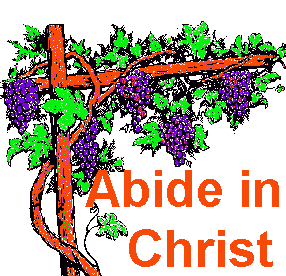"Yahweh Consoles"
Nehemiah brings the Old
Testament history to a close.
Nehemiah was a
contemporary of Ezra, and his book was a complement
to the book of Ezra. It provides information about
the reconstruction of the wall of Jerusalem and the
spiritual and social reforms that took place in
Judah after the return of the exiles. Nehemiah was
the builder of the wall of Jerusalem and governor of
Judea (5:14).
AUTHOR:
Nehemiah means "Comforted of Yahweh." He was a
cupbearer (1:12) under the Persian king Artaxerxes I
which meant he not only selected the wine and tasted
it to make sure that there was no poison in it, but
he was also a personal advisor to the king.
The book provides
information in the form of Nehemiah's own vivid and
frank personal accounts.
The book of Nehemiah
opens with "the words of Nehemiah (1:1). The
narrative about him is in the first person.
There is no reason for
excluding Nehemiah as the author of the book that
bears his name and gives testimony of his great
leadership. "The words of Nehemiah" indicates that
Ezra and Nehemiah were originally two separate
compositions. After the initial compositions at some
point Ezra and Nehemiah were treated as one book
since they were combined as one very early in the
Hebrew text. The books of Ezra and Nehemiah were
some time after composition united into one under
the title of Ezra in the Hebrew texts. Nehemiah was
treated as a separate book when the Scriptures were
translated into Latin. The English Bible followed
the same arrangement.
Josephus (A.D. 37-100)
and the Jewish Talmud refer to the book of Ezra but
not to a separate book of Nehemiah. The Babylonian
Talmud also regarded Ezra Nehemiah as one book
(Ezra-Nehemiah). The LXX (Septuagint)
also treats Ezra and Nehemiah as one book with the
title 1 Esdras. Origen (A. D. 185-253) is the first
writer known to distinguish between the two separate
books, which he called 1 Ezra and 2 Ezra. Jerome
called Nehemiah the second book of Ezra. Even the
English translation by Wycliffe (1382) and Coverdale
(1535) called Ezra 1 Esdras and Nehemiah 2 Esdras.
The books were not divided in the Hebrew canon until
A.D. 1448 when a Hebrew manuscript divided the books
in two.
It seems that Ezra
incorporated into one work his writings in Ezra and
Nehemiah as well as Nehemiah's personal memoirs in
Nehemiah. Another possibility is that a Chronicler
combined the works of Ezra and Nehemiah into the
canonical work of Ezra-Nehemiah.
Tradition ascribes Ezra
part to Ezra the scribe and the Nehemiah part to the
man Nehemiah. There is no good reason for doubting
the authorship to Ezra and Nehemiah, nor the order
in which they appear in the Bible.
TIME COVERED:
The book of Nehemiah covers from 445-433 B.C.
Nehemiah was a contemporary of Ezra, Artaxerxes I
(commonly called Longimanus) king of Persia, and the
Hebrew profit Malachi. Artaxerxes I ruled Persia
from 464 to 424 B.C.
The twentieth year of
Artaxerxes I (1:1) would be around 445 B.C., and the
month of Chislev is our November-December.
Therefore, he went to Jerusalem in Nisan or April
444 B.C. but still in the 20th year of Artaxerxes'
reign since his official year began and ended in
Tishri (Sep-Oct).
The Elephantine Papyri,
which mentions Sanballat (2:19) and Johohanan
(6:18), informs us that Nehemiah ceased to be
governor of Judah before 408 B.C.
Nehemiah also provides
historical background for the book of Malachi.
The first group of exiles
returned home to Jerusalem under the leadership of
Zerubbabel in 536 B.C. The Temple was rebuilt and
dedicated about 516 B.C. (Ezra 1-6). Then nearly
eighty years later a second group returned under the
leadership of Ezra in 458 B.C. (Ezra 7-10). The
focus of Nehemiah is on the third group of Jews who
returned from Babylonian captivity in 444 B.C.
The books of Nehemiah and
Ezra were probably written around 430 B.C. Ezra
arrived in 458 B.C. and Nehemiah 445 B.C. Nehemiah
8:9 tells us both were together at the reading of
the Law in Jerusalem and at the dedication of the
wall (12:26, 36).
Esther was Artaxerxes'
stepmother. One scholar suggests that she possibly
arranged Nehemiah's appointment as the king's
cupbearer.
Nothing is known as to
when or where Nehemiah died. It is certain from
information in the Aramaic papyrus from Elephantine
that he was no longer governor in 407 B.C.
OCCASION:
Nehemiah received a report from his brother that the
walls of Jerusalem had not been rebuilt (1:2-3). The
conditions in Judea were deplorable and hopeless.
The people of God lived in affliction and shame.
After four months of prayer and fasting, Nehemiah
asked and received permission from the Persian king
to go to Jerusalem to serve as its governor and
rebuild the walls.
A trickle of Jews
returned on the first two exoduses, and Ezra led the
people to revive their spiritual lives and rebuild
the temple. But the walls that protected Jerusalem
were still as Nebuchadnezzar had left them. It was
disturbing news that Nehemiah received about the
current state in Jerusalem (1:3).
Nehemiah demonstrated
personal skills in leadership and organization. The
walls were rebuilt in fifty-two days in spite of
great opposition from the enemies of Judah.
After the walls were
completed, Ezra read the Law to the people and a
general reform was brought about.
"As governor of Judah
Nehemiah exhibited humility, integrity, patriotism,
energy, piety, and unselfishness," writes C. C.
Ryrie.
After twelve years as
governor, he returned briefly to Artaxerxes' court
(13:6) and then back to Judah, where he instituted
great revival and reform (8:1-13:31). The moral and
spiritual reform is a slow and painful process.
Ezra and Nehemiah were
contemporaries working together as a priest and a
governor. Ezra helped to bring spiritual revival,
and Nehemiah worked to build the city and bring
about political, moral, and social reform. The two
leaders made an effective team. Malachi was used of
God to give spiritual direction and declare the last
word of revelation for 400 years until the coming of
John the baptizer, the forerunner of Jesus Christ.
THEME:
The book can be divided into major sections dealing
with the rebuilding of the walls of Jerusalem (chs.
1-7:73) and the revival of the people (chs. 8-13).
The covenant of Yahweh
with His chosen people is an important theme. God is
faithful to His people and His covenants with them.
He must punish His wayward people, but He does not
abandon them. Nehemiah 9:1-10:39 describes the
renewal of the covenant. Nehemiah prays (Neh.
1:8-10) claiming the promise of Deuteronomy 30:1-5
and Isaiah 44:28-45:4. When Cyrus the Persian
captured Babylon in 539 B.C., the Jewish captives
were freed to return to Judah.
God demonstrates His
sovereignty in the affairs of His people and the
Persian emperors. He protected the repatriates on
their journey and protected them from hostile forces
in the land of Judah. He provided key leadership for
the rebuilding of the wall and spiritual revival.
A sovereign God who used
a pagan empire to chastise His people also used one
to restore His people to the land He had given them.
The LORD God is faithful
to His people even when they are faithless. Grace is
written all over the book of Nehemiah.
STYLE:
The last two verses of 2 Chronicles are virtually
identical with Ezra 1:1-3a. The repetition of these
verses may simply be a device to dovetail the
narratives chronically.
The personal experiences
of Nehemiah are like a personal diary. Nehemiah 8 is
in the third person, but the two sections resemble
each other, making it likely the same person wrote
both.
Some scholars think the
author or compiler of Ezra and Nehemiah was also the
author of 1 and 2 Chronicles. All three have lists,
descriptions of religious festivals. Words for
"singer," "gatekeeper," and "temple servants" are
almost exclusively in these three books.
Ezra and Nehemiah were
written in a form of late Hebrew with the exception
of some official lists.
Clyde T. Francisco
writes, "the approach and style, as well as the
historical perspective, are the same in all three
books."
SIGNIFICANCE:
Nehemiah and Ezra provide us with the only
consecutive Hebrew account of Jewish history after
the Babylonian exile and return to Judah. From it we
understand the "inflexible segregation of the Jews
and its passionate veneration of the Mosaic Law" and
absolute revulsion of idols and worship of any god
other than Yahweh.
Of interest is the fact
that there is no mention in Nehemiah and Ezra of a
restoration to nationhood under a scion of David or
for that matter of the Messiah.
From the Babylonian exile
era came the synagogue, the scribes, and the
Sanhedrin.
An estimated 60,000 to
80,000 Judeans went into exile where they enjoyed a
measure of freedom and engaged in agriculture and
commerce. In some cases they acquired considerable
wealth as bankers and businessmen. The "remnant"
that returned to Jerusalem was the focus of God's
redemptive purpose through the Messiah.
The Old Testament leaves
a subjugated people in the Promised Land waiting for
the coming of the Messiah.
AUTHENTICITY:
There is general agreement among scholars as to the
genuineness of Nehemiah's personal memoirs.
The historical framework
of Nehemiah is confirmed by the Elephantine papyrus
discovered in Elephantine, Egypt in 1898 and 1908.
In 593-588 B.C., Psammetichus II established a
Jewish colony. These well preserved papyri were
written in Aramaic, the international diplomatic
language of the 5th-century B. C.
LaSor et al write,
"These business documents and letters were found on
the island of Elephantine, north of the first
cataract of the Nile and opposite Aswan. They
belonged to a Jewish military colony established at
least as early as the fall of Jerusalem in 586. The
texts throw brilliant light on the affairs of the
Jewish colony in Upper Egypt, especially for the
period 425-400. In 410 these Jews wrote a letter to
Johanan, high priest at Jerusalem (Neh. 12:22),
regarding the rebuilding of their temple. In 407
they sent a long appeal in the same regard to
Bagoas, governor of Judah, in which they mentioned a
similar letter to 'Delaiah and Shelemiah, the sons
of Sanballat the governor of Samaria.' Assuming this
is the same Sanballat who was the inveterate enemy
of Nehemiah (2:19; 4:1 [MT 3:33]), the Artaxerxes
referred to in 2:1 must be Artaxerxes I" (LaSor,
Hubbard, and Bush, Old Testament Survey, p.
560).
Francisco says, "There is
authentic materials from the private diaries of both
Ezra and Nehemiah, especially from that of
Nehemiah."
"Nehemiah was quite human
and, with all his faults, possessed much mobility of
character. Generous, faithful, with a splendid
patriotism, he at once arouses our interest.
Nehemiah was a businessman with a love for God in
his heart. His heart kept him true, and his
cleverness kept him successful. His was no mock
modesty; he knew his worth and fearlessly made
mention of it to God. He concluded his labors with
'Remember me, O my God, for good' (Neh. 13:31),"
writes Francisco, (Introducing the Old Testament,
p. 72).
Title: Introduction to
Nehemiah
Series: Introduction to
Bible Books
Index
of Bible Studies on Nehemiah



